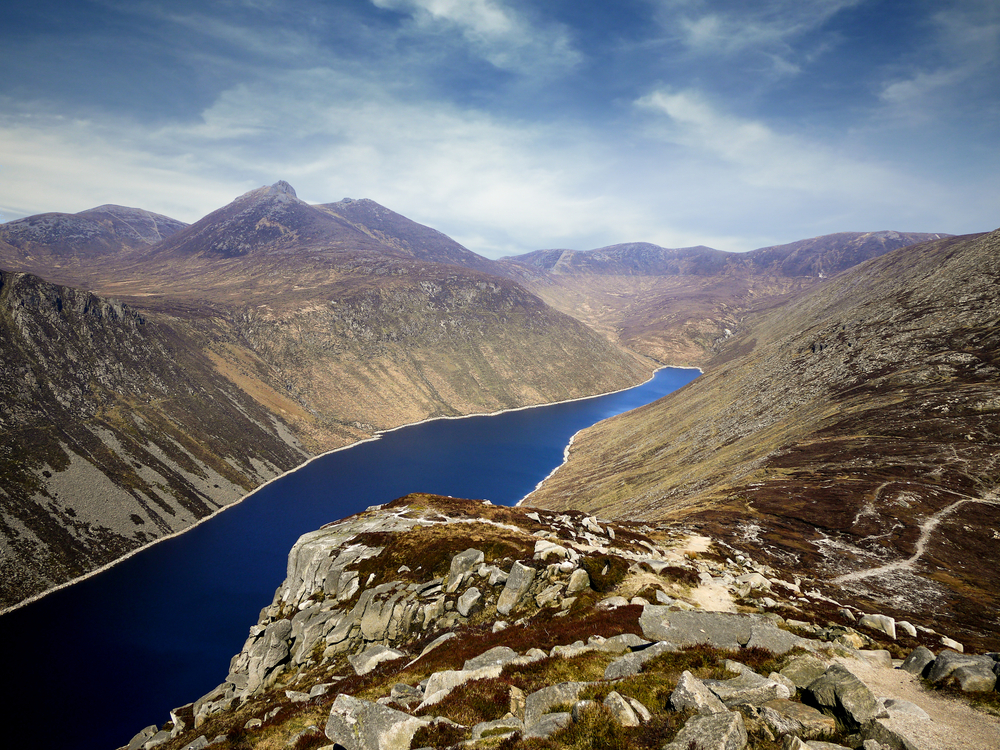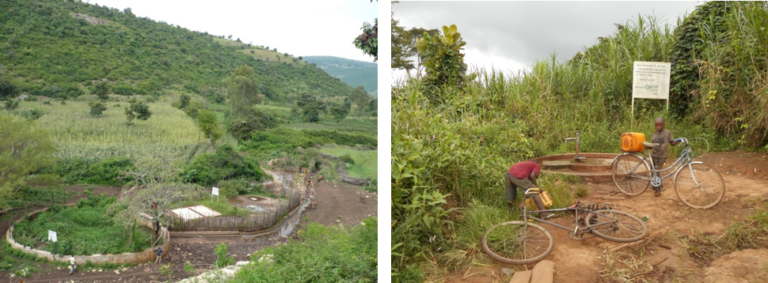Water sources

Share this step
In the last step, we looked at diseases that can be caused by poor water and sanitation. One of the most important elements that we need to look at to ensure good health and well-being is where our water is coming from. What we term “water sources”.
Water sources
Rising numbers of people in the world mean ever-increasing demands for resources, many of which require a reliable supply of water as an essential factor (for example, irrigation for agriculture, the production of energy, use in manufacturing industries) in addition to the obvious direct water requirements we have as individuals for drinking, cooking, washing etc.
It is therefore important to appreciate the various sources from which water can be gained, and be able to evaluate advantages and disadvantages of the different options available in any scenario, particularly from the perspective of long-term sustainability. Such an evaluation must also be considered in light of predicted impacts of climate change on the water cycle as well as potential linked migrations of population.
Where can water be taken from?
Water as a resource can be broadly classified as surface water or groundwater.
Surface water sources include freshwater rivers, lakes, and reservoirs, but may also include the local collection of rainfall runoff from a hard surface, known as rainfall harvesting. Freshwater can also be recovered from the sea after treatment to remove the saltiness which is known as desalination.
 Surface water resources: photo of reservoir in Ireland and local rainfall harvesting in Ethiopia.
Surface water resources: photo of reservoir in Ireland and local rainfall harvesting in Ethiopia.
Groundwater sources include the water that has percolated into the rocks beneath our feet. In some places the groundwater makes it to the surface to discharge naturally via springs. However, groundwater is often exploited by digging or drilling wells down into the water table to pump this water to the surface. This pumping can be via hand pumps if the quantity required is relatively small, or by motorised pumps for higher volumes of water from deeper depths.
 Groundwater resources: photo of spring in Ethiopia and hand pump on hand dug well in Tanzania.
Groundwater resources: photo of spring in Ethiopia and hand pump on hand dug well in Tanzania.
There are also opportunities and increasing efforts to source water from waste water that has been recycled into a useable form. For example, waste water can be treated to the point where it can be used to irrigate certain crops.
Are there differences between these sources?
Yes in terms of water quantity as well as water quality, both of which are important factors when deciding on a sustainable water supply.
In terms of quantity, surface water sources are often easier to assess by measuring the flow of a river or size of a lake. For groundwater this assessment can be more complicated as different rock types (sandstone, limestone, volcanic etc.) store different amounts of water, and release it at different rates depending on the number of pores and fractures in the rock.
However, for any source its water budget needs to be defined i.e. can the amount of water taken out be replenished by natural processes (mainly rainfall) in the long-term – if not then the source will not be sustainable. The impact of removing such a volume of water also needs to ensure that it does not negatively impact on any local aquatic ecology, for example, reducing river flows during dry periods.
In terms of water quality, surface water sources are generally impacted more than groundwater sources with typical contaminants including pathogens, agricultural nutrients, and pesticides etc. Such sources therefore generally require more treatment before use (as described in the next article 3.5).
The quality of groundwater is linked to the bedrock where it has been stored as it generally will have been in contact with the rock for a long period of time. For example, water from limestone normally has high calcium and bicarbonate. However, there can be some natural forms of contamination (fluoride, arsenic) linked to specific geologies which can have chronic health implications for humans.
Arsenic in groundwater is a notable example of this as it is thought to have poisoned over 200 million people worldwide, most notably from the thousands of tubewells drilled in West Bengal/Bangladesh in the 1970s (see articles in the further links section to read more about this).
What determines the sustainability of a water resource?
Thinking about water resources, there are many questions that need to be considered to determine whether they are sustainable or not. For example:
- Can the source provide the required amount of water supply for the target population over seasonal, annual, and longer term trends without becoming depleted? This must also consider the vulnerability to climate change predictions: will there be less rain and warmer temperatures in the future; will rainfall occur in more extreme events?
- How will the water get to the population? This is related to its proximity, height of the resource, and energy availability. Can it flow naturally by gravity or does it need to be pumped? Could pumping be powered by a renewable source such as solar pumping?
- What is the cost to develop and supply the resource and how will this be financed, not only during construction but throughout its years of operation?
- What is the need and cost (construction and ongoing maintenance) for subsequent treatment of the water before use? This is covered in the next article 3.5.
- What is the environmental impact of using the resource, particularly on any downstream communities and aquatic ecology?
- Are there ownership/transboundary issues related to the exploitation of the resource?
- Are there other competing uses for the water, such as agricultural requirements for crops and/or animals, industries, energy supply?
Thinking about your own experience with water in your home:
- Where does the water you use in your home come from; is it surface water or groundwater?
- How far away is the source?
- Is it pumped to you, or does it flow by its own energy, naturally by gravity?
- Describe what impacts you feel that climate change may have on the provision and long-term security of water resources in your area?
Share this

Reach your personal and professional goals
Unlock access to hundreds of expert online courses and degrees from top universities and educators to gain accredited qualifications and professional CV-building certificates.
Join over 18 million learners to launch, switch or build upon your career, all at your own pace, across a wide range of topic areas.
Register to receive updates
-
Create an account to receive our newsletter, course recommendations and promotions.
Register for free








